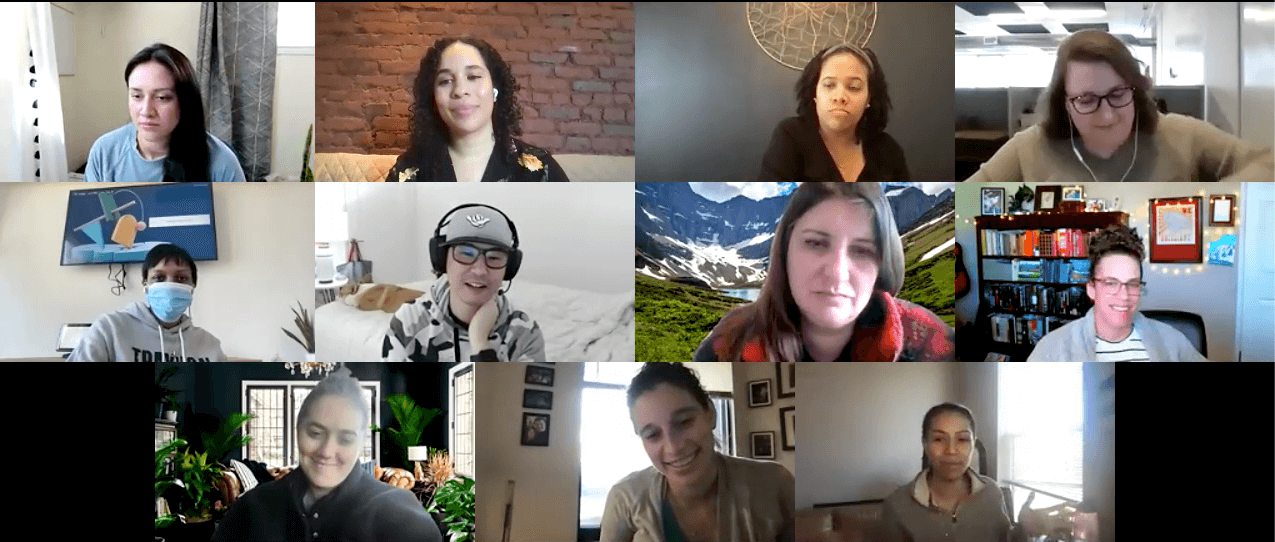If you're searching for what to do with your employee engagement survey results, you may be disappointed to find that most advice starts after you've gone through the results and are ready to share with your team. But that's jumping the gun. Before you start sharing your results and implementing changes, you need to make sense of the data you've been given — otherwise, you're guesstimating problems and solutions. So once employee survey results are in, but before you share your plans with the team, here's what you need to do.
Don't just take your employee engagement survey results at face value.
All of your survey responses taken together give you the big picture of what's happening at your company. This is a useful litmus test for general sentiment and can help give you a baseline for how employees at your company feel. But you can't just work off all of your responses together, because you might bury valuable insights that you can get by looking at a particular cross-section of responses. Say, for example, your survey results say that 80% of employees agree or strongly agree that company morale is good. That's awesome! But what happens when you dig into a cross section:
- Split by department and you may find that 70% of engineers disagree.
- Split by gender and you may find that 60% of women disagree.
While your overall results are good, if you don't follow up and dig into your survey data, you aren't going to see that there are some departments or groups that aren't receiving the same support as others. This can be especially important to do in large companies. If your company is 50 people, and your engineering department of 15 people are unhappy, they have a much bigger statistical influence on overall results. If you have a company of 500 and an engineering department of 60, their unhappiness is less likely to move the needle on overall results. In addition, this can help you pinpoint where problems and solutions may lie in your company. If the engineering department has low morale, but the HR department's is sky high, are there things that HR is doing differently that could transfer? Do you need to hire more engineers? You'll never get to ask these questions if you only look at topline results.
Look at every employee engagement survey answer holistically.
Once you have examined your cross-sections, it's time to contextualize the answers to your survey. This has several components, including digging further into the numbers, and looking at the broader view of what is happening in your company. Take this example from 2017's Vermont state employee survey. They noted that 55% of respondents agreed that management communicated in an effective manner. This would be a strong base, if 40% had responded neutrally and 10% had responded negatively. However, that wasn't the case:
[Source]
Even when a majority of respondents agrees on something, it is still best practice to contextualize that information and note any causes for concern. If you have historical data on your company's employee engagement survey results, compare them to inform how your current results stack up. For example:
- Your current survey says that 35% of employees enjoy working at the company.
- Your last survey said 20% of employees enjoyed working at the company.
- Therefore, your current survey shows a 15 percentage point increase in employee satisfaction from the previous survey.
Is it good that 35% of your company is having a positive employee experience there? No, but it is a huge step in the right direction compared to 20%. This tells you that the changes you made after your last survey are working. Conversely, if there's a dip in job satisfaction, that is a red flag to probe further. It might be that outside factors have changed the results, even if your company didn't change any official policies. So take stock of what major company changes have happened recently. If you've hired a ton in the last quarter, you might get more agnostic results as new people might not feel strongly about issues yet. If you opened a new office, your communication scores might be low. Taking a holistic view of your survey results can be the difference between smart analysis and unnecessary panic.
Make hypotheses before you share your engagement survey results.
Before you talk to your team about survey results, brainstorm problems that might be impacting employee engagement levels and potential solutions to those problems. This is key for several reasons:
- You can't expect your employees to do all the work for you — and they don't have all the data you have.
- Employees are going to ask questions about what you're planning and what your next steps are. Giving them assurance that you are working through solutions keeps their confidence that you are taking the survey seriously.
- Brainstorming can tell you if there's a mismatch between employee perceptions of problems and management's perceptions of problems. If you don't brainstorm beforehand, you won't get that clarity.
Your hypotheses should be based on your employee engagement survey results and the work that you have done to investigate cross sections and contextualizations. After you've done that analysis, you need to gather together your managers to get their input on what could be causing the problems that you've seen crop up in the survey results. Keep in mind that you don't need to come up with 100% polished policy recommendations before talking to your team, but you should have a basic plan for how you will go forward.
Share the results with your team.
Now you're finally ready to share your results with your team. Pat yourself on the back! You've already put in a lot of effort to get through your survey and analyze the results. At this point, you have made and given the survey, received responses, broken it down, and discussed results with management. To finally present your work to the team:
- Thank them for their contributions. This should be your opening, especially if your survey was voluntary. Employees are taking time out of their schedules to answer survey questions and be honest about their experiences, and this can be difficult and time consuming.
- Let employees know you've identified areas of concern. This will show that you have truly paid attention to employee feedback and are actively thinking about the problems that the survey brought up.
- Outline your basic plans and next steps. This makes it clear that you aren't just listening to concerns, you are actually addressing them through action planning. It is a critical step to reassure employees that your engagement survey will make a difference.
- Open the floor to comments. Now, it's time to step back and see what your employees have to say. They may be able to give you critical insights or new ideas that can better your plans. This is also a gut check to see if the areas that you have identified as problematic resonate with employees.
- Ask for further feedback. Let employees know that you'll be open to any further feedback and are receptive to their thoughts on your plans as they unfold. This ensures that employees stay involved and feel like they have a role in shaping their own engagement.
This presentation can be a company-wide one, but consider holding a standalone meeting just to present survey results, rather than trying to tack it on the end of an all-hands. Giving this presentation the time and space it deserves is a way of further signaling that you are taking your employee engagement surveys seriously.
Stay the course
Making the most of your employee engagement survey results comes down to a willingness to find the information that doesn't appear at first blush. With a little effort, you can pull out a much more useful data set from your overall survey results. Once you've done that work, then it's time to start brainstorming solutions and sharing your results with your team. But don't just skip ahead to this step because you're eager to report back to your employees. Stay the course and take the time to properly interpret your survey before parroting results back to employees.






.png)
